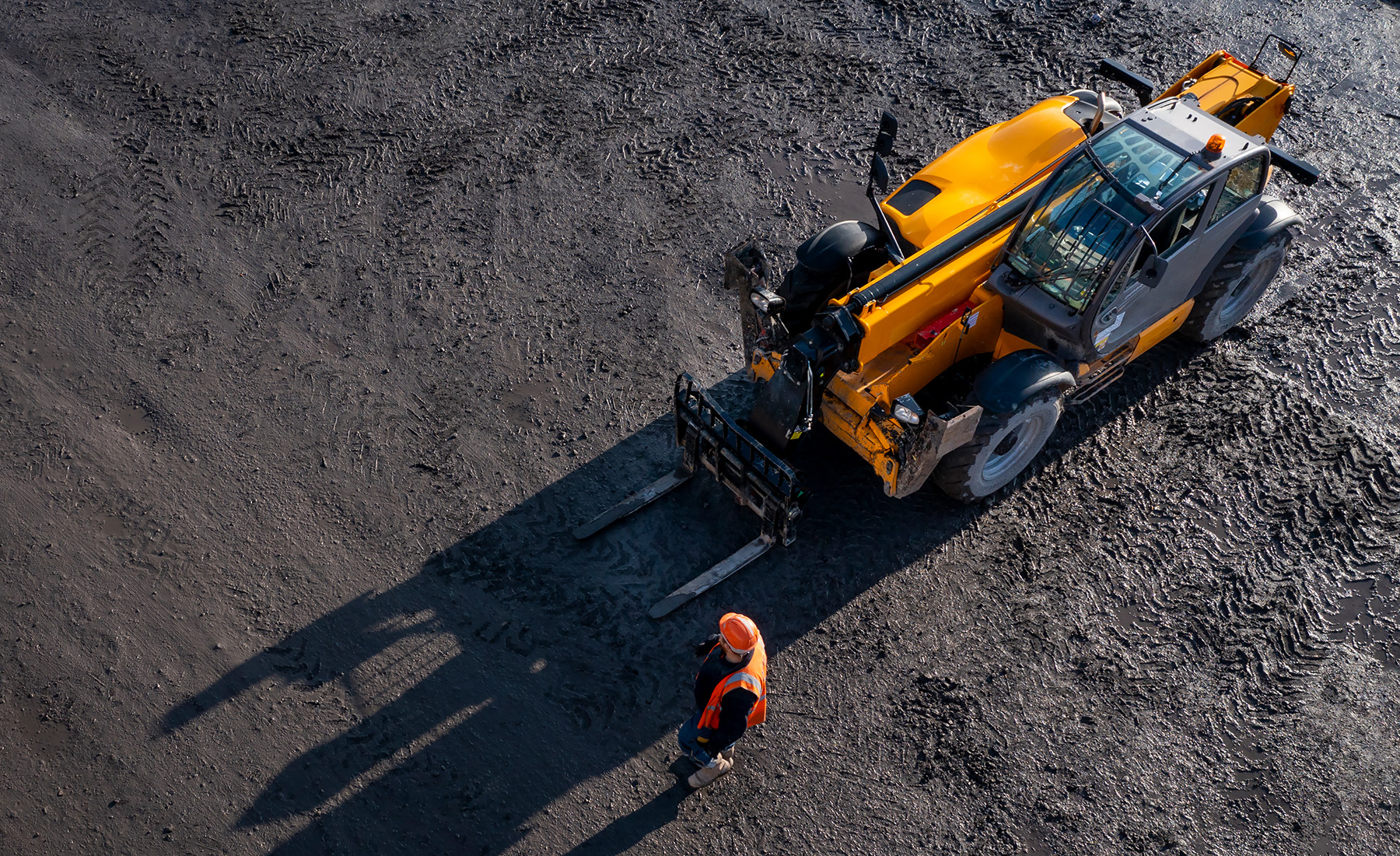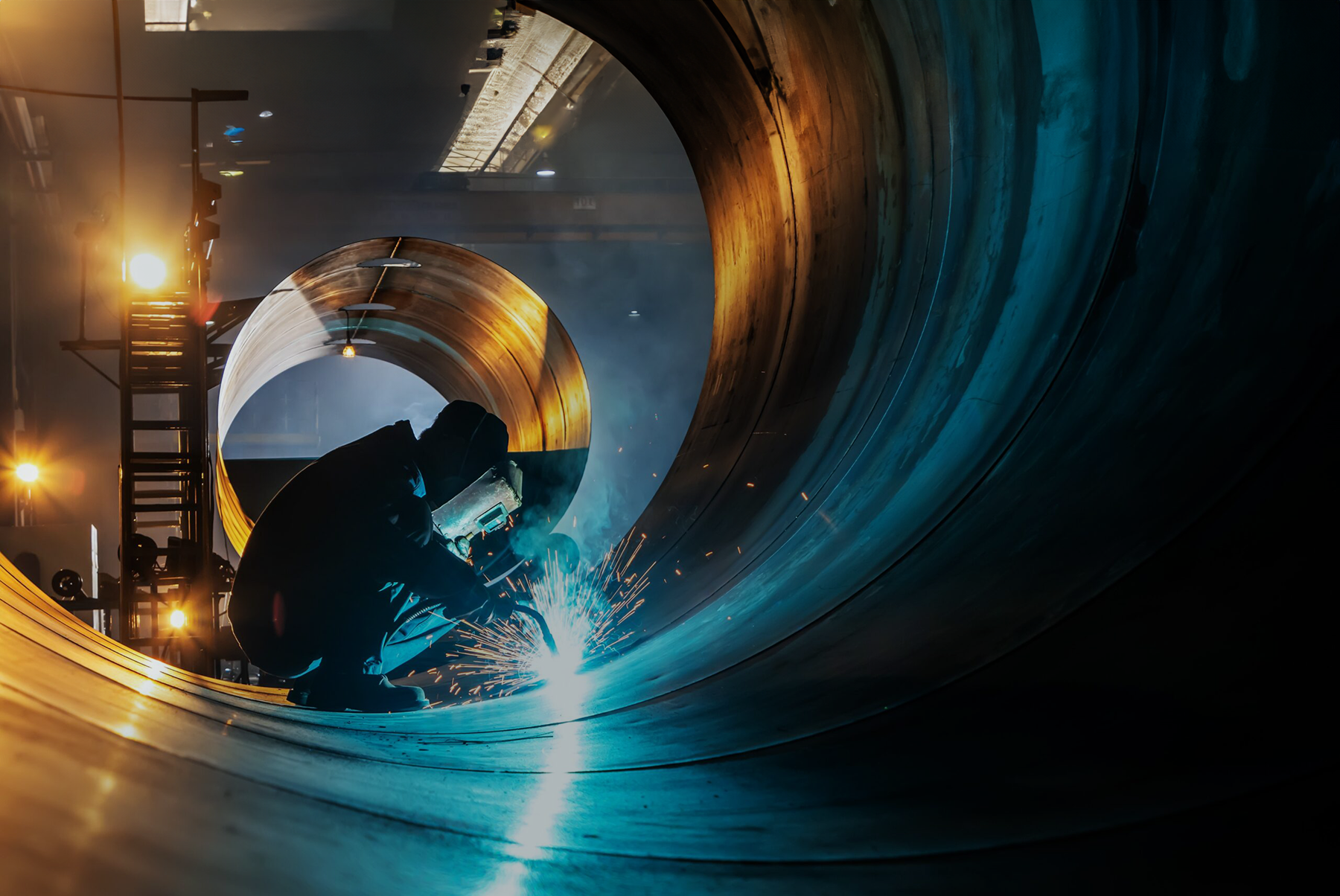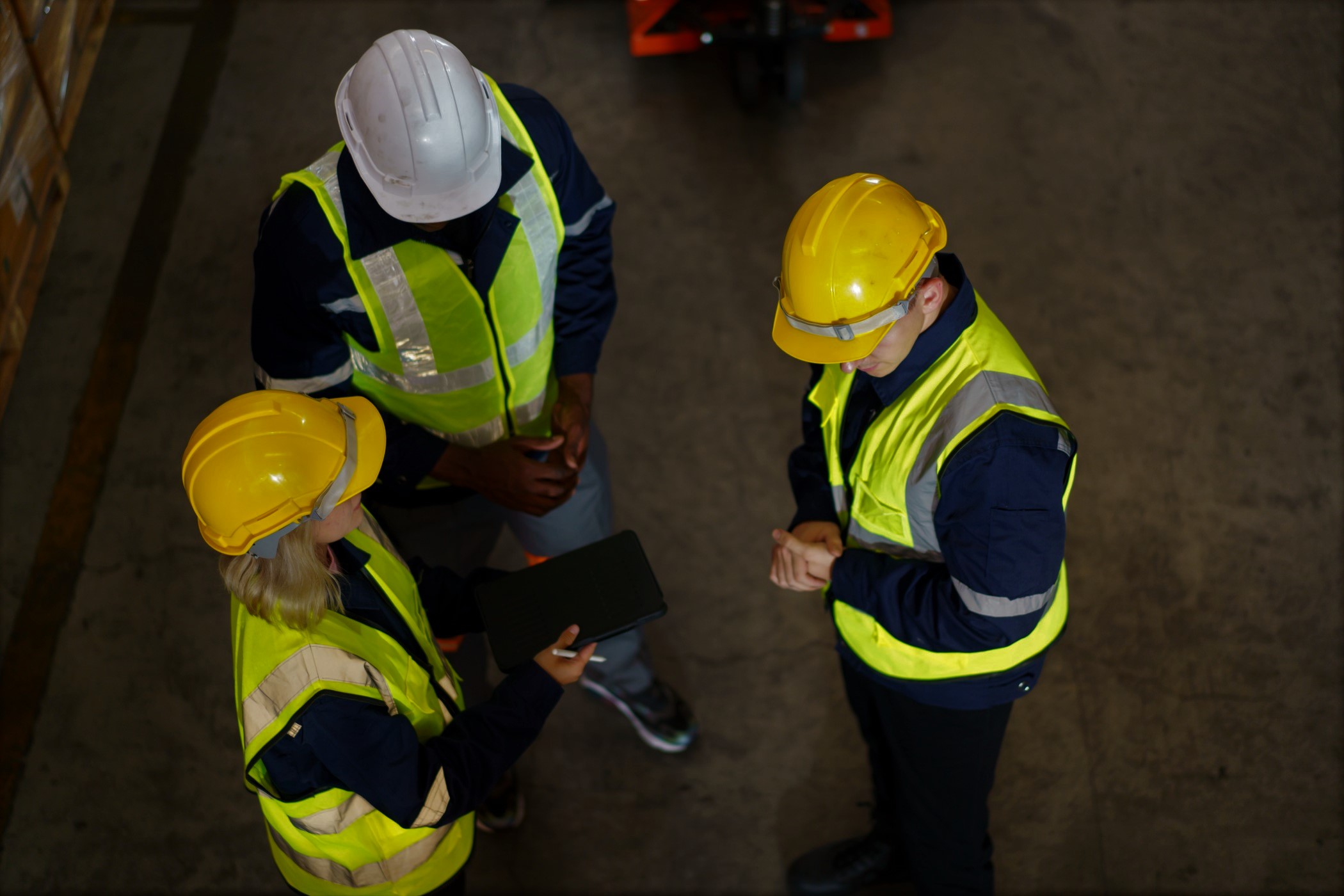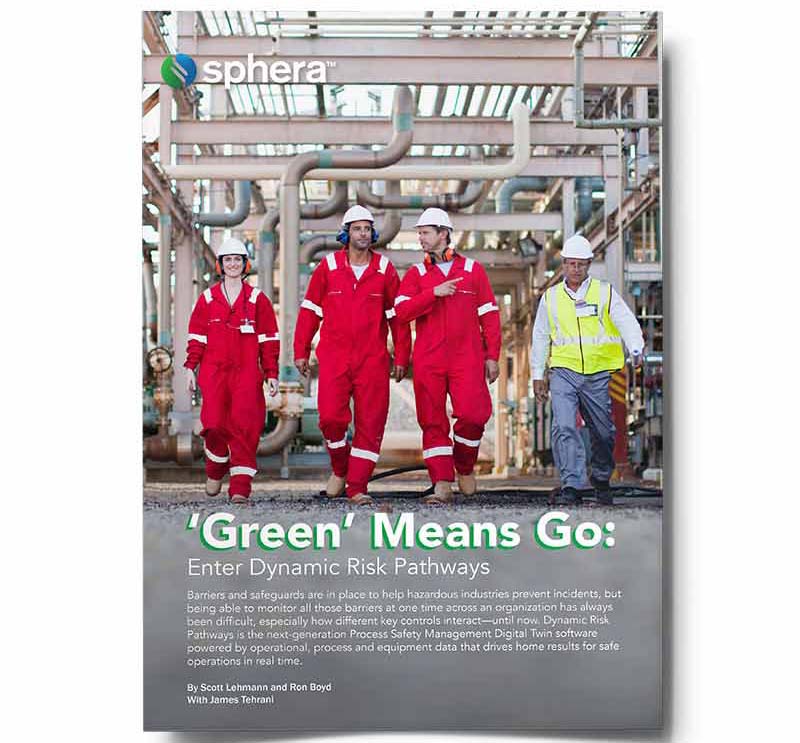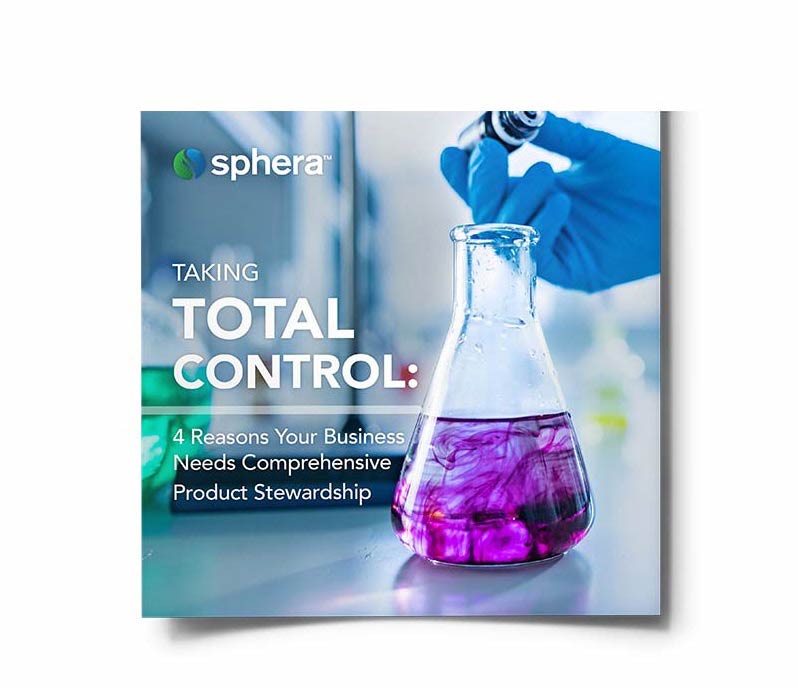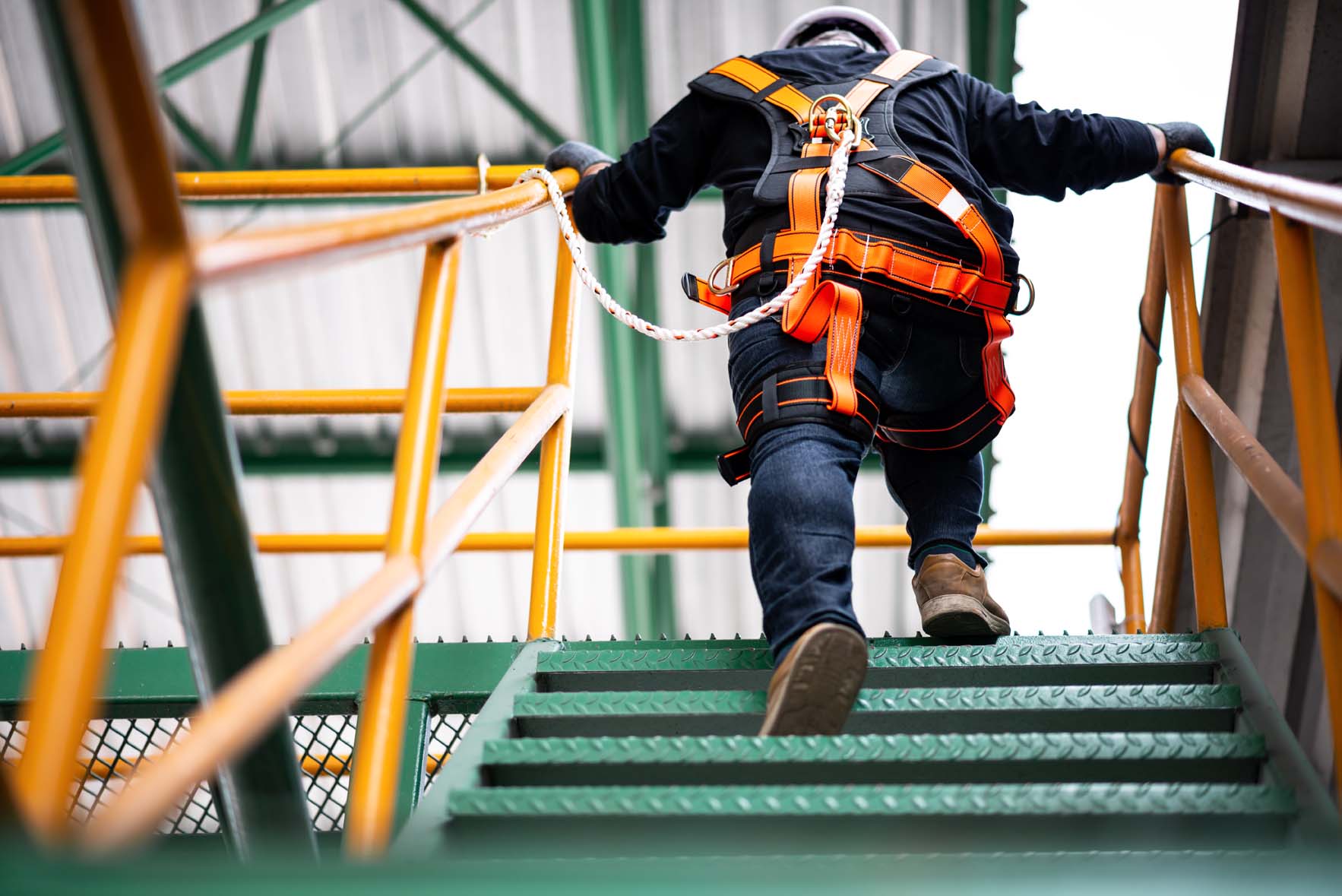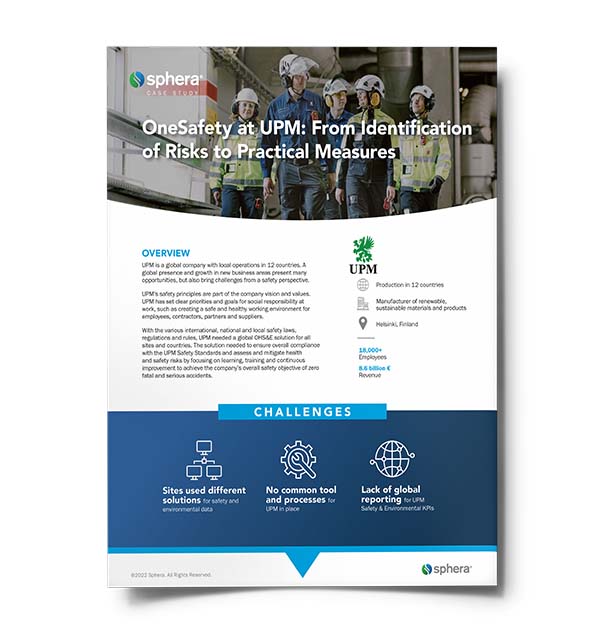In this three-part series, Andy Bartlett, Sphera’s solution consultant for Operational Risk Management, details lessons learned from incidents he has seen during his 40-plus-year career. Listen to parts two, three and four.
The following is an edited transcript of the podcast.
James Tehrani:
Welcome to the SpheraNOW podcast. I’m James Tehrani, Spark’s editor-in-chief. Today on the program, I’ll be speaking with Andy Bartlett, Sphera’s solution consultant for operational risk management. We’ll be discussing what we call Andy’s Almanac on accidents. As a process safety expert with more than four decades of experience, let’s just say Andy has seen some things. These incidents are important to discuss to help learn not only what happened, but how organizations can ensure these types of incidents do not occur again. So let’s discuss. Thank you so much for joining me today, Andy. I should mention that this is going to be a three part series, and in this first part we will be discussing Andy’s career working in the UK on industrial incidents. So how are you today, Andy?
Andy Bartlett:
Yeah, I’m fine. There’s a cold snap here in the North of England, so it’s time to get the winter woolies out.
James Tehrani:
Well, we still have some warm weather here in Chicago, so we’re lucky about that. So before we begin, can you tell me a little bit about your background and how you got interested in incident management in the first place?
Andy Bartlett:
Yeah. When I first joined an industrial facility, which was back in October, 1977, part of the orientation, they were discussing incidents that happened in the past. And one of them was quite interesting because we were told during the induction that the only fatality was a cow in a nearby field, and about one of the employees who they all knew, I didn’t know him, had ran. And as he was climbing the security offenses, coveralls got burned off and he got his back burnt. But later on I went to look in the archives of the local newspaper, and the phrase, “A terrific explosion occurred at the new PVC resin plant, hurling large lumps of metal under the railway line and shattering windows in homes as far as three miles away.”
Andy Bartlett:
And then later on in the article, it talked about 10 employees being injured, six of them requiring hospitalization. So for some months, however, they did all recover and some of them still worked at the facility. So I began to think, what would it have been like to actually be in that situation? Could I have done anything different? So later on in my life, I looked back at these and, what was the causes? I’d been trained in root cause analysis.
Andy Bartlett:
So the equipment that we were dealing with was a vinyl chloride monomer. The process was vinyl chloride monomer in autoclaves under high pressure, high temperature. It’s a very volatile chemical, it’s poisonous, it’s toxic. And the safety practices, this was back in the ’50s, in 1955, actually, since it happened, were probably not as good as they could have been. So later on I’m working at the plant and one day I go home, my son says to me, “Dad, why are your hands all white?” And I’d been working on the cooling system, and unfortunately I’d got chemicals all over my hands due to, was I following the procedure? I don’t know, I can’t remember. The problem was the safety equipment really wasn’t up to standard.
James Tehrani:
So you were actually involved in your own incident?
Andy Bartlett:
Yes. I was dosing a sprayer pond with a chemical from a drum with a metal scoop, and I had on rubber gauntlets, PVC rubber gauntlets. So as I was scooping the chemical into the water, the sprayer hit me as the wind changed and the scoop fell out of my hand, it fell in the water. Naturally, I went to grab it. My hands went below the water, the gloves filled up with the water that had just been dosed with this chemical and burnt the skin off my hands.
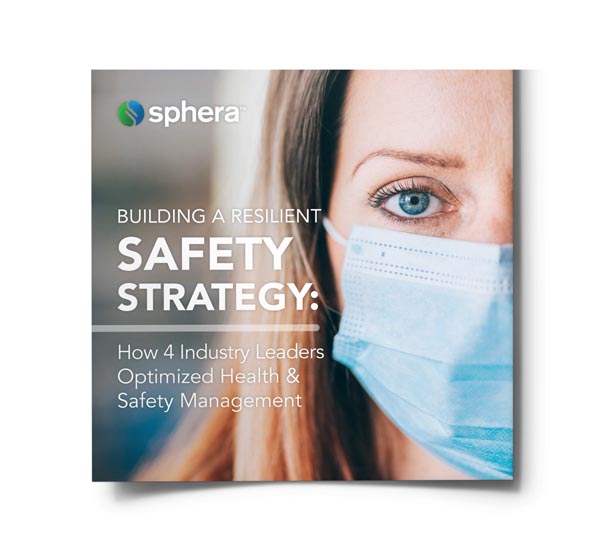
James Tehrani:
Oh my goodness.
Andy Bartlett:
Yeah. So in those days we didn’t have risk assessments to do with jobs. The incident-
James Tehrani:
I was going to say, what was the process? What, were you supposed to tell someone? Or were you supposed to just suck it up and go home and take care of it on your own?
Andy Bartlett:
In those days, best to keep your mouth shut.
James Tehrani:
Really?
Andy Bartlett:
So we had a union planned and there would have been an investigation and stuff like that, but most of the guys I worked with just said, “Say nothing about it, because you’ll get the blame.” Which, in the old days, whenever there was an incident, the blame was always put on the person. There was no looking at what was the management system that went wrong. In this particular case, I went back and looked, and it was safe work practices. We had one set of gauntlets for four shifts. Each guy should have had his own set of gauntlets. Today, you would have. The gauntlets would have been a tight fit, they wouldn’t have been slipped off. And the dosing would have been done from a place that was not near the water, it would have been done separate. And I suspect that’s what they do today.
Andy Bartlett:
So that was one incident. And every time you look at incidents, you learn things, okay. So what went wrong? How could it be done better? And of course there wasn’t any MSDSs on this particular plant I worked at. Every single chemical had its paperwork removed and held in the engineer’s office, because nobody wanted to share the process with competitors. So that was just one point.
James Tehrani:
When would you say the focus changed on safety processes? Was that in the ’70s, was that in the ’80s? And what was the reasoning, do you think, that there was a change in a real focus on safety when you’re talking about modern times, versus say the ’50s and ’60s when it wasn’t as prevalent?
Andy Bartlett:
Well 1975, the UK government brought out a law and things changed overnight. We had censors fitted for gas so that if any vinyl chloride escaped, the censors would go off and let you know you had a leak. There was government inspectors coming every month to the plant to check how things were being done and spot checks and things.
Andy Bartlett:
So yeah, in 1975 we had a better PPE, we had monitoring of the facilities, and it seemed to just happen overnight. They must have had the money somewhere and they fitted all this stuff to look at how things were. So another incident that happened to me while I was there, my job at the time was to charge the reactors with vinyl chloride. And I was just finishing off a charge, which was a pump pumping through a line with a meter into the reactor. And when the meter shut, of course the line pressured up back to the pump, and then it was my job to stop the pump. Everything was manual. So just before I stopped the pump, I noticed all these clouds of white. White clouds coming out of this pipe. And I stopped the pump and I went to my supervisor. I said, “I’ve just seen some leaks from this line.” He said, “Oh, that can’t be possible. That’s a brand new line, they just put it in at the last turnaround.” I said, “No, no I did.” So he came out with me, he was really skeptical.
James Tehrani:
I’m sorry to interrupt, but did you feel empowered at that time to stop a process if you felt there was something unsafe?
Andy Bartlett:
I didn’t notice it until the process had ended.
James Tehrani:
I see, okay.
Andy Bartlett:
Now, as for emergency stops, there wasn’t really any because you didn’t want to stop one of these reactors when it was ongoing, because it was a isothermal reaction. That’s the last thing you wanted to do. So yeah, if something really bad happened, you would have to deal with it. But that’s another story in itself. There’s actually a CCPS incident report about a vinyl chloride plant where they did exactly the same thing. They opened the wrong reactor up to dump it, one that was in service instead of the one that it was not in service. So these things happen in industry because people rush, they don’t take the time, or those things aren’t assigned the right spaces.
James Tehrani:
I’m hoping for a lay audience, you can kind of briefly explain what a vinyl chloride plant creates. What kind of products would come from that kind of plant?
Andy Bartlett:
Well, if you’ve ever used a plastic bowl in the kitchen-
James Tehrani:
Okay.
Andy Bartlett:
9 times out of 10, it’s made out of a polyvinyl chloride. Windows, drain pipes, things like that. This starts out as a gas, it’s put into an autoclave reactor, a chemical mix. And then it comes out as a hot slurry. The slurry is dried, it becomes a white powder. And the white powder is compressed into moldings, bowls, pipes, things that are used all over the world.
James Tehrani:
So very common household and items that you’d see every day, just come from these types of processes?
Andy Bartlett:
Yeah, they do. Yeah. You want to go further back? Vinyl chloride is made in big factories from other chemicals. I won’t go into that. So yeah, so my supervisor was very skeptical. So I started up the pump because he was up where the line was, and he could see all the little puffs go on down the line and said, “Stop, stop.” Yeah. So I said, “Now will you believe me?” So when they came and did the, because it was a failure of that size, they came and they investigated it. And they found that the contractor had been specified a particular steel for the line, but he used a cheaper specification steel to save him money, however, it failed. So management of change, somebody who was there when the new line was put in should have checked that it was the right steel for the job.
James Tehrani:
Interesting.
Andy Bartlett:
So yeah. Management of change causes incidents.
James Tehrani:
Do you feel like today there’s more of a focus on contractors than there was back in, say the ’60s and ’70s, and what their processes were for managing the plant safely, and doing their work safely?
Andy Bartlett:
I think that there has been a shift towards inclusiveness of contract as part of the workforce, rather than just somebody comes in and does a job that nobody else wants to do, and a job that’s a lot cheaper than you could do it for. So yeah, I think that contractors have to be treated as part of the workforce. The safety processes, working with them should be really good engineers who work for the company itself to keep a check on what they’re doing and give them any advice if they have any questions to ask. But this is not the first time I’ve seen the wrong piece of equipment used, the wrong metal used for a job over my time in the industry. People do want to say, “Oh, we haven’t got the right job. We haven’t got the right equipment to complete the job, and go and find somebody else.” And unfortunately, failures can happen because they haven’t used what was specified.
James Tehrani:
And that sort of plays into that information silo that we always talk about where one contractor or one company isn’t really sharing the information correctly and properly. Isn’t that part of this?
Andy Bartlett:
Yes. The silos of information, and there is the old, how would I put this politely? There is, in the industry, people, “I know this and I don’t want to share it with you because I might lose my job.” That was-
James Tehrani:
We don’t want that.
Andy Bartlett:
No, no. That’s what I used to feel in the old days. I mean, and going back, you get this recipe for for charging the autoclave, the reactor, and there’d be so much vinyl chloride. Everybody knew what that was, it came in big tankers, they couldn’t hide that. But then there would be so many pounds of chemical A, so many pounds of chemical B, so many pounds of chemical C, so much hot water, so much of this other fluid, which was like a washing liquid to make the suspension better.
Andy Bartlett:
And then there was this real nasty stuff you put in the end to start the reactor, which smelled like Domestos, but you don’t really have that in the States, do you? It’s chlorine.
James Tehrani:
Chlorine, yeah.
Andy Bartlett:
Yeah. And it smelled something like that, but we all knew it was nasty stuff. So that all went into this reactor and you pressed a button and away it went and you controlled it, a specific temperature. And then at the end when the temperature started to rise, you couldn’t control it any more, then you would dump it because it had finished its reaction. But we didn’t know what those chemicals were because the management didn’t want the recipe to get out to competitors. Now, I haven’t been back to that plant, and I would imagine in this day and age, that wouldn’t be allowed because the standard of care for employees has raised a lot since then.
James Tehrani:
Sure. And you kind of talked about this a little bit earlier, but was there sort of this mentality that you just have a job to do, and even though you’re smelling this chlorine type smell, it’s just, back in those days it was like, “We have a job to do, we have to get this done, we have to ignore that?” And it’s kind of morphed into today where, if an employee or a worker smells something like that, they’re really supposed to note it, make note of it and tell the proper people in the plant. Has that really changed a lot?
Andy Bartlett:
Well, I would imagine it has. I know that in the industries I’ve worked in since, yes. But in the chemical industry at the time before this 1975 act, people who had a heavy night on the beer the night before and had a bit of a hangover, they were going to have a sniff of this stuff to wake them up. That’s how bad it was.
James Tehrani:
Wow.
Andy Bartlett:
And the other thing about this act, I haven’t put any notes on this, but I was just trying to remember, now you’ve asked me the question. When the act came in, they started doing tests on all the people that had been there over 25 years. And one of the tests that they did was called a lumbar puncture where they drill into the liver and they take a biopsy. And we had four shifts, and three of our shift supervisors were given immediate early retirement because the tests had come back as the livers were starting to show signs of vinyl chloride affecting the way they operated.
James Tehrani:
Really?
Andy Bartlett:
Yeah. And the other thing was the fingers and the hands had started to stiffen. So that was when I made my mind up, “I think I’ll try and find a job outside of this industry,” because one of them was a very good friend of mine. I used to play cards on the company team, and he was my partner in the cards team. And he took his early retirement, but three months later he was dead. And then one of the other ones died as well, so a year later out of our shift supervisors who’d been mid, early retirement, only one was still alive. So I began to think, “There’s got to be something that, over the years, they haven’t been protected from the effects of vinyl chloride. And this new act that came in in 1975, hopefully will protect the rest of the people who work there.”
James Tehrani:
Yeah. When I think of that kind of risk, and I think back to the coal miners with the black lung, and I think of that as 100 years ago, I don’t think of this type of thing happening 30, 40 years ago, but I guess it did.
Andy Bartlett:
Well, you’ve only got to look at the asbestosis. There’s cases of asbestosis that are not that old, maybe 20, 30 years ago. And there’s always the people who won’t obey the safety rules. They think they’re not susceptible to these types of things. You find them in every industry.
James Tehrani:
Definitely. So we talked a little bit about PPE, but my understanding, based on the hierarchy of controls, is PPE is kind of the least effective defense. You want to eliminate, you want to substitute, there’s engineering controls. Can you talk a little bit about the hierarchy of control?
Andy Bartlett:
Yeah. Well, the ideal thing is to always engineer it out, if you can, across. If you’re looking at risk as always is to sell the risk on to somebody else. But in a production facility, you’re going to have to do work, so you have to minimize risk, engineer it out, or use a different way of doing the job. And eventually, you come down to PPE. But some of the things, like adding a five gallon drum of a chemical to a reactor, it’s manually done. So they would minimize the exposure by a double-block system, but we didn’t have masks in those days. I would imagine today they have a mask that would prevent any inhalation of the chemicals or of the gases that escape. So yeah, there’s the ideal world, and then there’s the practical world on minimizing risk.
James Tehrani:
Definitely. And I just want to return back to your story a little bit. So what was the outcome with your hands? Did you have to go to the hospital?
Andy Bartlett:
No, no. It had just taken the… The skin was all crackled.
James Tehrani:
Okay.
Andy Bartlett:
And it healed itself within a week or so, skin regenerates pretty quick. I mean, I was quick enough to dip go and dip them in some fresh water to minimize the effect of the chemical.
James Tehrani:
So what would you say was the most serious incident that you saw in that period?
Andy Bartlett:
I think the most serious incident I saw was the line getting ready to part with all these holes down it. If it had parted and the vinyl chloride was released at pressure, it would start to vaporize because it was a liquid, it was starting to vaporize. And if it found an ignition source, you’d have a big explosion. And it was at pressure because the pump was pumping it. So that sort of really was a wake up to me that I need to be aware of what other people are doing, not just myself.
James Tehrani:
It’s a team effort, safety is a team effort.
Andy Bartlett:
Yes.
James Tehrani:
And then it helps nowadays that you have the software that you didn’t have back then as well, I’m sure.
Andy Bartlett:
Yeah, that’s right. Having information about what’s happening all around the facility is not just where you are in your own little bubble.
James Tehrani:
Just out of curiosity, when was the first time that you started using a computer, or noticed people using computers to document incidents? Was that in the ’80s?
Andy Bartlett:
I’ll give you the exact date in a minute, I’ve got to think. I think it was 1985. We had a computer in the office to share, and we’re all allowed to use it for, I think it was a maximum time of 30 minutes, you would go on it and then somebody else would go on it. And it had access to the internet and we were allowed to get our own private email accounts on Hotmail. So Hotmail had just come out at that time. And we also had company email in a very very raw format. So if there was an incident, we had a way of reporting it to the safety people.
James Tehrani:
Were you saving on these big floppy disks like they had back then?
Andy Bartlett:
Five, is it five and a quarter? Some were five and a half, I can’t remember now. You had your own disk you took with you. Yes, that’s right.
James Tehrani:
The younger people listening to this are going to be like, “What are you talking about, we had disk?” But yeah, well actually, my first computer, I had a tape drive, so I didn’t even have a disk. That was in the early ’80s, we just saved everything on tape. And then the biggest joy for us was to get these big floppy disks that we’d stick in there.
Andy Bartlett:
Yeah, I had Texas Instruments, a computer that had games on it in the house, which I got for my two boys at the time. And that was quite interesting, Pac-Man and stuff like that.
James Tehrani:
Well, is there anything else about industrial incidents that I didn’t cover today that you’d like to talk about?
Andy Bartlett:
Well, now we have systems, management systems. And if you go back and look at incidents that you were involved in and it helps you to see, “Okay, that that was a management of change went wrong there. That was an acid integrity and reliability that went wrong there. That was a safe work practice that went wrong there.” You start to build up a better understanding of the older instance. Now with the new incidents, you go to Marsh and it tells you what happened and probably what the management system was that failed.
Andy Bartlett:
And if you do root cause analysis, it tells you, you finally figure out what went wrong and which management systems failed. So this is the big change, I think, is that instead of blaming the person, we blame the management system that went wrong. Now that person could have initiated the thing that went wrong, but why did the management system allow? And this is where you get to your engineering controls. How did they allow that person to make that mistake? Was the engineering of the system not right? Could it be improved? So that’s one of the basic things I’ve learned.
James Tehrani:
Well, thank you so much for your time, Andy. I really appreciate it. And in part two of this series, we’ll be talking about Andy’s career in Saudi Arabia near incidents. So I’m looking forward to that. Thank you so much for your time.
Andy Bartlett:
Okay. Thank you, James.



